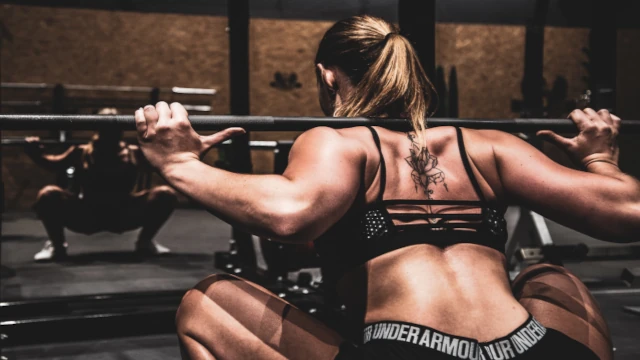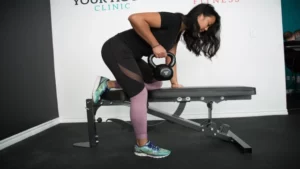Hindu Squat
The Hindu squat, rooted in ancient Indian physical culture, is a powerful bodyweight exercise that targets the lower body, particularly the quads, glutes, and calves. It also offers benefits for cardiovascular endurance and overall mobility. Unlike the traditional Western squat, the Hindu squat emphasizes a fluid motion and includes unique breathing patterns.Over the years, it’s been adopted by athletes, martial artists, and fitness enthusiasts around the world due to its multifaceted benefits.
Here’s why the Hindu squat is considered such a great exercise:
Full Body Workout: Even though primarily a lower body exercise, the Hindu squat engages multiple muscle groups. The primary targets are the quads, hamstrings, glutes, and calves, but the core and lower back also play stabilizing roles.
Cardiovascular Benefits: Due to the rhythmic and continuous nature of the exercise, Hindu squats can elevate the heart rate and provide a good cardiovascular workout, especially when done with higher repetitions.
Joint Mobility: The unique motion of the Hindu squat, especially the emphasis on staying on the balls of the feet, promotes ankle mobility. The deep squatting motion also aids in hip and knee joint mobility.
Strengthens the Posterior Chain: Although the movement is quad-dominant, the hamstrings, glutes, and lower back—collectively known as the posterior chain—are also engaged. Strengthening this chain is vital for overall functional fitness and injury prevention.
Improves Balance and Coordination: Performing the Hindu squat requires a degree of balance and body awareness, which can lead to improved proprioception (sense of body position) and coordination over time.
Functional Fitness: The deep squatting movement mimics natural human movements like sitting down and standing up. Training with Hindu squats can improve the ability to perform such everyday movements with ease.
No Equipment Needed: Because this is a bodyweight exercise, Hindu squats can be done anywhere, anytime, without needing any equipment. This makes it a versatile exercise suitable for home workouts, travel, or any situation where gym access is limited.
Breathing and Rhythmic Movement: The traditional practice involves a specific breathing pattern, which can enhance lung capacity and rhythmic coordination between movement and breath. This can be particularly beneficial for sports or activities that require synchronized breathing.
Historical Significance: Practiced traditionally by Indian wrestlers and warriors, the Hindu squat has stood the test of time. Its longevity speaks to its effectiveness and relevance even in modern fitness regimens.
Scalability: It’s an exercise suitable for beginners to advanced practitioners. The intensity can be increased by performing more reps, increasing speed, or incorporating weighted vests.
Step-by-Step Guide
Starting Position
- Stand upright, keeping your feet shoulder-width apart.
- Keep your arms straight before you, parallel to the ground.
- This is your starting position.
Beginning Movement
- Begin by raising your heels so you’re on the balls of your feet.
- Start lowering your body by bending at the knees.
- The Descent:
The Descent
- As you descend, swing your arms back alongside your body.
- Keep your back straight and chest up.
- Your knees will move forward beyond your toes, which is typical for this type of squat. Ensure it’s a comfortable movement and doesn’t strain your knees.
- Breathing Pattern:
Breathing Pattern
- Breathe deeply through the nose as you descend.
The Bottom Position
- Your glutes should be close to your heels at the lowest point.
- Your arms will be swung back, with fingers pointing towards the ground behind you.
The Ascent
- Begin to rise by pushing through the balls of your feet.
- Swing your arms forward to return to the starting position.
- Breathing Pattern:
Breathing Pattern
- Exhale forcefully through your mouth as you ascend.
Return to Starting Position
- Finish the movement with your arms extended before you, ready to initiate the next repetition.
Key Tips
- Ensure you’re performing the movement with a smooth, controlled rhythm. Speed can be increased as you become more accustomed to the technique.
- Keep the weight on the balls of your feet throughout the motion.
- Always maintain a straight back to avoid any undue pressure.
- Listen to your body. If you feel any discomfort, especially in the knees, consider adjusting your form or seeking advice from a fitness professional.
Modifications and Progressions
Beginner: If balance is a challenge, perform the squat near a wall or sturdy object, which you can lightly hold onto if needed.
Advanced: Try doing the squats faster or longer to increase the intensity. Another progression is to hold a lightweight kettlebell close to your chest.
Incorporating Hindu squats into your fitness routine can offer a unique challenge and variety. It offers a holistic workout experience, blending strength, cardio, balance, and flexibility benefits into one seamless movement. Always prioritize form over the number of repetitions; with consistent practice, you’ll master this ancient exercise in no time!




